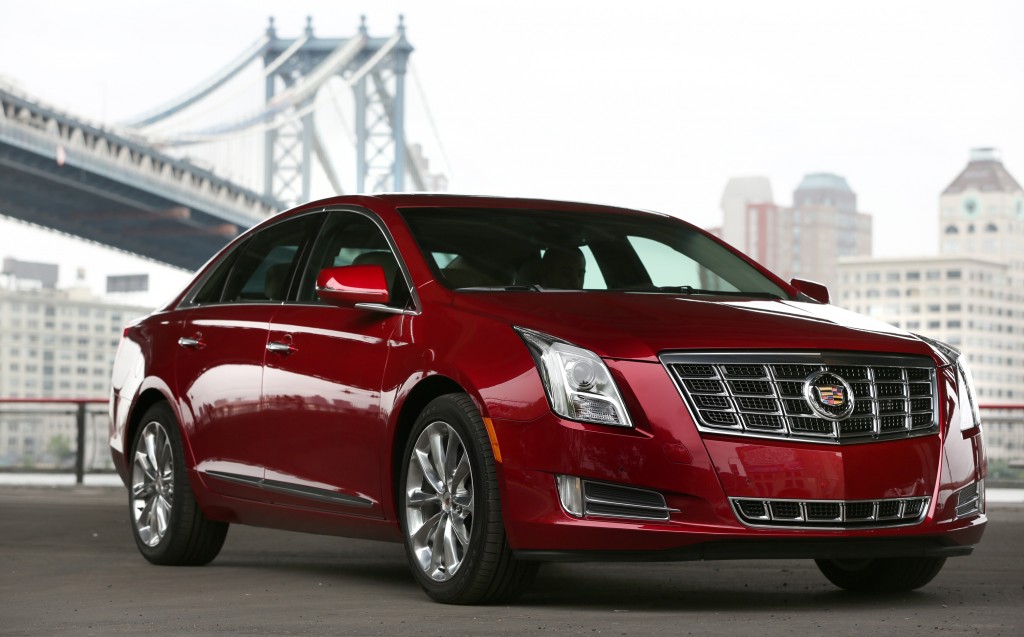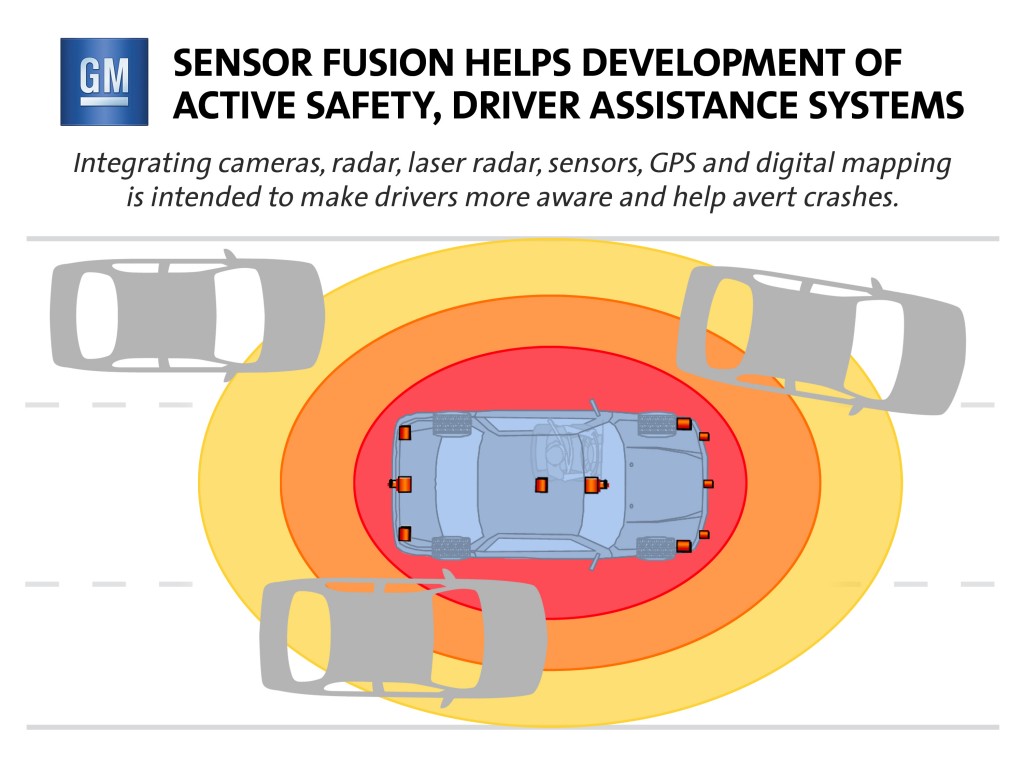Cadillac Radar technology gives your new Cadillac more awareness of the road ahead.

The 2013 Cadillac XTS in New York, New York. (Photo by Mike Appleton for Cadillac)
Cadillac Radar allows new Cadillac XTS and ATS models to use ‘super cruise’ and automatically detect and maintain safe following distances. Super Cruise, blind spot detection, and lane change avoidance systems all act as integrated aids to unobtrusively assist the Cadillac driver in real world situations.
Cadillac makes the best simultaneous use of all the incoming sensor data using sensor fusion. Sensor fusion is the process of integrating inputs from multiple sensors so that the driver or pilot gets enhanced information that highlights their actual care-abouts.
“We’re bringing the future forward for today’s drivers,” said Don Butler, vice president, Cadillac Marketing. “The Driver Awareness and Assist technologies are tailored for intuitive use in the rigors of daily commuting.”

Cadillac Radar and sensor fusion
Press Release:
DETROIT – New York’s famed Brooklyn Bridge provided a key testing ground for Cadillac’s new Driver Awareness and Driver Assist active safety technologies that include maintaining a safe following distance to other vehicles even in stop-and-go traffic.
The Brooklyn Bridge’s intricate metal design and traffic volume allowed General Motors engineers to refine the radar sensors so they can tell the difference between stationary objects like guard rails and bridge structure from vehicle traffic.
Metal structures can “confuse” some types of radar into detecting a vehicle or obstacle is approaching, causing an unnecessary warning or action from the safety systems,” said Jim Nickolaou, lead engineer for Sensor Fusion.
Sensor Fusion is what engineers call the science of discerning the data collected from cameras and sensors in and around the car. It is part of Cadillac’s all-new 2013 XTS luxury sedan and ATS compact sport sedan.
“The camera, sensors and radar technology act as the ‘brain’ behind all the safety features, feeding data 25 times per second into the car’s computer network,” Nickolaou said. “We found that the best way to test the system’s accuracy was to gauge its performance in stressful driving conditions that could confuse it, like those conditions found on the Brooklyn Bridge.”
Once the largest suspension bridge in the world, the Brooklyn Bridge spans the East River that divides Manhattan and Brooklyn. Its massive expanse of metal cables, barriers, and structures combined with New York City traffic to make it an ideal place to test Sensor Fusion.
Overall, nearly 2,000 scenarios were identified to test the sensors and radars, including variables such as weather, traffic volume, lighting, and radar reflections, all of which can impact radar systems or other sensors in the car. Data was collected to anticipate a range of real-world conditions, and Sensor Fusion software development was tuned to prepare the production technology for such rigors.
“We have to try and anticipate every scenario, especially those that really challenge the technology,” Nickolaou said. “We tune the systems to discern actual obstacles from other things in the vicinity that should not cause a warning or braking action.”
The Driver Assist Package also offers safety technologies such as Automatic Collision Preparation, Lane Departure Warning, and Front and Rear Automatic Braking. Common to these systems is the science of Sensor Fusion, which is also used in Cadillac’s unique Safety Alert Seat that delivers warnings to drivers via a pulse on either or both sides of the seat cushion.
The advanced features on Cadillac’s all-new 2013 cars are an early benefit from long-term research and development on semi-autonomous driving. Nicknamed “Super Cruise,” Cadillac’s semi-autonomous technology is capable of fully automatic steering, braking and lane-centering under certain driving conditions. This technology could be ready for production vehicles by mid-decade.
“We’re bringing the future forward for today’s drivers,” said Don Butler, vice president, Cadillac Marketing. “The Driver Awareness and Assist technologies are tailored for intuitive use in the rigors of daily commuting.”


